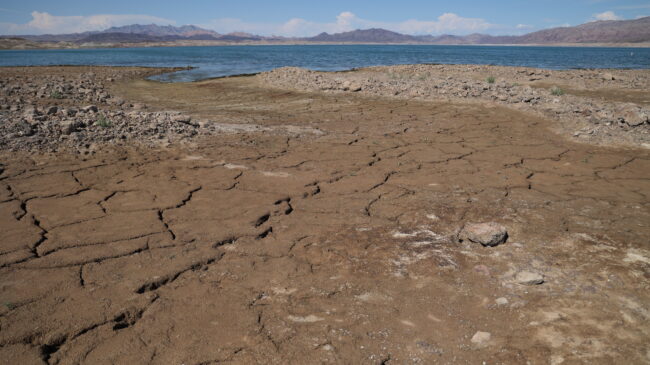The U.S. Bureau of Reclamation recently announced cuts to the water allotment Nevada and Arizona get from the Colorado River. The cuts—21% for Arizona and 8% for Nevada—demonstrate the water challenges facing Western states. They also highlight the timeliness of the groundbreaking bipartisan water legislation passed in Arizona and signed by Gov. Doug Ducey in June.
Arizona is dedicating $1 billion over the next three years to fund water rights acquisition, conveyance, and conservation efforts while allowing the water projects to be established through a wide variety of contracting and procurement methods. This substantial investment better equips Arizona to respond and adapt to the challenging demands of both its growing population and the dwindling availability of freshwater supplies, a move other Western states should watch with keen interest.
The Associated Press reports seven Western states relying on the Colorado River should expect more water cuts:
But those reductions represent just a fraction of the potential pain to come for the 40 million Americans in seven states that rely on the river. Because the states failed to meet a federal deadline to figure out how to cut their water use by at least 15%, they could see even deeper cuts that the government has said are needed to prevent reservoirs from falling so low they cannot be pumped.
“The states collectively have not identified and adopted specific actions of sufficient magnitude that would stabilize the system,” Bureau of Reclamation Commissioner Camille Touton said. Together, the missed deadline and the latest cuts put officials responsible for providing water to cities and farms under renewed pressure to plan for a hotter, drier future and a growing population. Touton has said a 15% to 30% reduction is necessary to ensure that water deliveries and hydroelectric power production are not disrupted.
Seven states and Mexico rely on water from the Colorado River for both consumption and recreational needs. And the water needs in those Western states are increasing. The populations in Arizona, Colorado, Idaho, Nevada, and Utah all grew by more than 10% over the past decade, according to Census Burea data.
Back in 2016, the Bureau of Reclamation (BOR) forewarned: “Growing demands in the Colorado River system, coupled with the potential for reduced supplies due to climate change, may put water users and resources relying on the Colorado River at risk of prolonged water shortages in the future.”
While both this and next year’s announced cuts by the BOR will not affect residential use, the current cuts have already forced Arizona farmers to cut back around 65% of their Colorado River allotment. The drier Colorado River is not all due to a drying climate, either—agricultural interests draw heavily from groundwater supplies that also source about half of the Colorado River’s water. Continued dry conditions and groundwater extraction could lead to a 30% decline in the river’s flows over the next 30 years, which would necessarily include even more drastic water allotment cuts.
While many conversations and assessments will need to be made before Arizona’s water projects come to fruition, the recently-passed legislation and its dedicated funding show there are possibilities to start solving Arizona’s water use demands.
The state may end up conveying water from the Mississippi River or transferring desalinated water from offshore Mexico, both ideas that Arizona is examining, or it may discover those ideas are not financially viable. For now, the fact that those ideas and others are even being considered demonstrates state lawmakers recognize the need to find creative ways to overcome water problems that will likely only intensify as populations in many parts of the West continue to grow.
In an era where bipartisan agreement is increasingly rare, Arizona lawmakers from both major political parties wisely agreed that securing water for the coming decades required swift action that was bold enough to embrace an “all of the above” type approach, which means local governments and potential public and private partners will not be limited in looking for ways of potentially delivering innovative solutions to secure and save water.
Modern technology has provided the means to make sure there can be enough water to sustain populations all over the world, including in dry, fast-growing environments like the Western United States. While some methods are still quite expensive and not always practical at scale, potable water can now be generated from almost any potential source, including seawater and even raw sewage.
For Western states to meet their growing populations’ water needs, they will need funding, the flexibility to seek a wide variety of projects, and a determination by lawmakers and local leaders to pursue the right arrangements to structure those critical projects and operate and maintain them for decades.
Managing and operating water projects comes with inherent risks. For example, cities in the Eastern United States have dealt with deferred maintenance issues with their aging municipal water systems. Needed repairs and upgrades that have been put off for years become increasingly expensive and difficult for governments and taxpayers to fund.
Long-term leases and public-private partnerships with clear contracts and accountability can be effective in shielding taxpayers from the financial risks of building and maintaining many expensive water infrastructure projects. Governments can transfer the risks to private companies better capable of managing those risks.
While Western states and the federal government have made efforts to plan for higher water demand and reduced supplies from traditional sources, much work remains to be done. Arizona made a critical step in passing legislation earlier this year that gives the state’s local water systems varied and valuable tools to help manage water acquisition, conservation, and conveyance. Arizona’s legislation saw nearly unanimous support in both legislative chambers and other states might find it useful to adopt a similar approach as they seek to secure water for the future.

